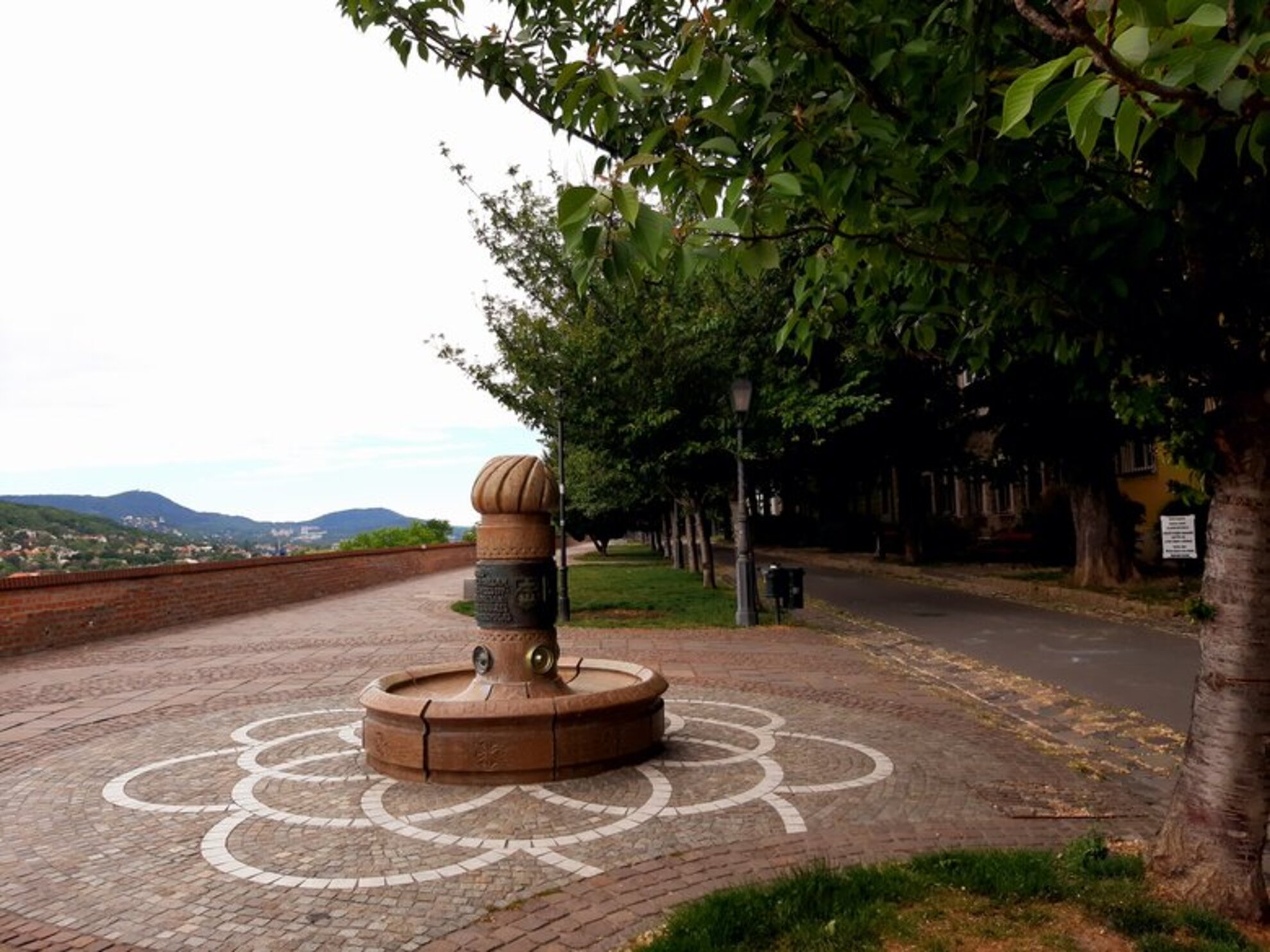Tóth Árpád sétány offers the most attractive walk around the Castle District. Easily accessible, it provides a unique panorama of the Buda hills, with plenty of benches. The sun shines brightly all afternoon – if its rays are too strong, shade can be enjoyed beneath the double row of trees. It's ideal for romantic strolls, lazy jogs and outings with toddlers in tow – no wonder that this is the walk of choice for many here as a brief escape from quarantine.
Centuries ago, behind the fortifications of Castle Hill, these passages served a military purpose, losing their role when a defensive function was no longer needed. A row of double trees was installed on the ruins of the castle walls in 1720, the first in our capital.
In the 19th century, this walkway was called Bastei Promenád, from 1879 it was Bástya sétány (‘Bastion Promenade’), then in the 1930s renamed after Miklós Horthy and Gróf István Bethlen, both prominent statesmen. In 1946, the western part took the name of Tóth Árpád sétány, after the poet of the early 1900s who lived on nearby Táncsics Mihály utca.
The lesser-known eastern section of the original Bástya sétány was named after his contemporary, the writer Babits Mihály. It runs from the Vienna Gate to Erdélyi-bástya, where recent excavations saw it transformed into an archaeological visitor’s centre. However, the old name remains in the vernacular to this day: composer Mihály Eisemann’s penultimate operetta in 1958, still performed, was Bástyasétány 77, in which three boys and three girls sharing a house squabble before dispute, of course, turns to love. In 1974, Gyula Gazdag created a grotesque satire based on the famous Socialist operetta, Bástyasétány ’74, which could not be performed for a long time.
The devastation of World War II destroyed this neighbourhood as well, including the trees. In 1967, it was relandscaped with new pavements and benches. For a fair time, the road was mostly shaded by chestnut and maple trees. The ornamental cherry trees, which produce the bright pink blossoms in spring, were only installed along the outer row in 2006 and 2009, in two stages, when a comprehensive renovation was carried out in the area. They might be young, but the cherry trees seem to have set the local decorative tone for much longer – the chestnut trees behind them are much older and larger. In some places, the 10 Million Tree Movement has also planted young seedlings.
One end of the promenade opens onto the Fehérvár rondella, also called Pasha Kasim Bastion after its builder. It was intended to protect Fehérvár Gate, but in the Great Fire of Buda in 1723, both were destroyed, as the gunpowder depot here exploded. The rondella was rebuilt several times, but the bridge over the roadway seen today only indicates where the old gate may have been.
The Fehérvár rondella later earned a footnote in history: on 21 May 1849, during the Uprising against the Habsburgs, Hungarian soldiers broke into the castle here. Today, you can walk past hedges and flowerbeds open to it. From here, atop his horse standing on huge pedestal, General Artúr Görgei, stares sternly over the hills of Buda.

The inner alley facing the houses is still mostly made of horse-chestnut trees. Among the sights is the ornamental well Ősforrás created by the famous Zsolnay ceramics factory, given by the City of Pécs and Baranya County in 1973 to mark the centenary of the unification of Pest and Buda.
A little further away stands a statue of a prancing horse, A Memorial to Two Hussars of Transylvania who fell in World War I, the work of Lajos Petri.
Further along the promenade, in one rondella you find a wooden pavilion, where a band once played a century or more ago, entertaining strollers – it was rebuilt in 2010 for public functions. The outcrop on which it stands has a rather unusual name: Savanyúleves bástya, ‘Sour Soup Bastion’, believed to date back to the Ottomans, who called it Eksi su Kulesi, ‘Sour Juice Tower’.
Next to the Museum of Military History, the Esztergom rondella bookends the Tóth Árpád sétány with cannons from different centuries, perfect for kids to climb on. When Buda was recaptured in 1686, the rescuing armies first entered the castle through this shattered rondella. The green space here is called, somewhat ambitiously, Tóth Árpád Park.
The promenade from the Esztergom rondella to the Vienna Gate is Anjou sétány, which also saw great battles take place in 1686. Here, the last pasha of Buda, the 70-year-old leader Abdurrahman Abdi Arnaut, lost his life in battle. Some 250 years later, a monument was erected in his honour by the descendants of the György Szabó, a Hungarian soldier who died at the same spot during the Liberation of Buda.
Approaching the Vienna Gate, you might also notice a completely unfamiliar feature on the right side: the former National Electric Load Distributor Centre, a landmark of late modern architecture, according to experts – and one soon due to be pulled down.




